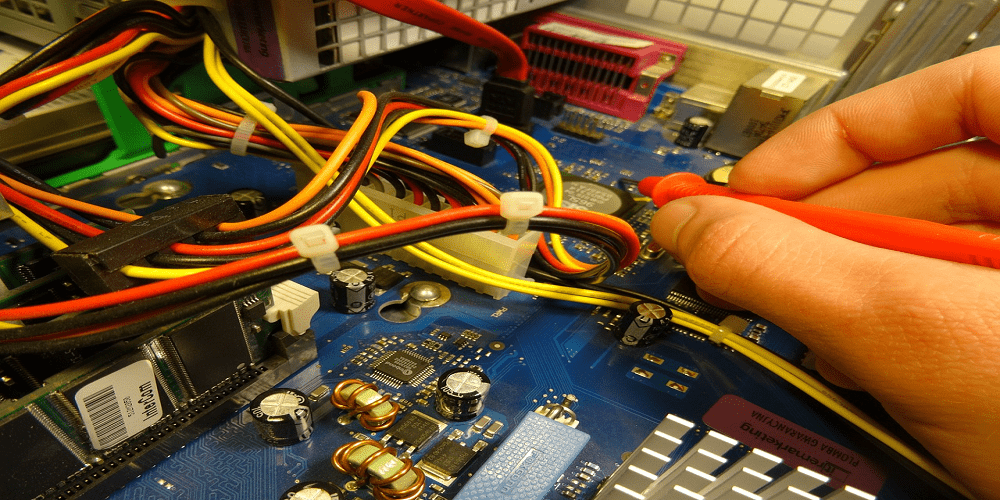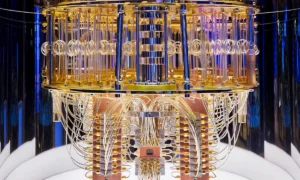Welcome to the exhilarating world of supercomputing! Behind all those groundbreaking scientific discoveries and mind-boggling simulations lies an intricate web of wires, processors, and cooling systems. It’s time to peel back the curtain and take a sneak peek behind the scenes of these technological marvels. But wait—before we dive into the awe-inspiring capabilities of supercomputers, there’s one crucial aspect we can’t afford to overlook: regular maintenance. In this blog post, we’ll explore why maintaining these computational powerhouses is non-negotiable if we want to ensure their optimum performance and longevity.
Introduction
Supercomputers are the most powerful computers in the world, capable of performing incredibly complex calculations at lightning speeds. They’re used for a variety of tasks, including weather forecasting, climate research, nuclear weapons simulations, and more.
While supercomputers are incredibly powerful, they’re also very delicate. In order to function properly, they need to be well maintained and cared for. Regular maintenance is essential to keeping a supercomputer running smoothly and avoiding costly repairs or replacements.
There are a few different things that need to be done during regular maintenance on a supercomputer. First, the system needs to be cleaned of any dust or debris that could clog it up. Next, all of the software needs to be updated to the latest version. Any broken or damaged parts need to be repaired or replaced.
Regular maintenance may seem like a hassle, but it’s absolutely essential to keeping a supercomputer running properly. By taking care of your supercomputer and investing in routine maintenance, you can avoid costly repairs and keep your machine running at peak performance.
What are Supercomputers Used For?
Supercomputers are used for a variety of tasks, including scientific research, weather forecasting, and creating animated movies. They are also used to create virtual reality simulations for training purposes. Supercomputers can process large amounts of data very quickly, which makes them ideal for tasks that require a lot of number crunching.
Why is Regular Maintenance Necessary?
Supercomputers are some of the most powerful machines in the world, and they are used for a variety of purposes ranging from scientific research to weather forecasting. However, like all machines, they require regular maintenance in order to function properly.
One of the most important aspects of regular maintenance is keeping the software up-to-date. Supercomputers often run specialized software that is not always compatible with the latest operating system updates. As a result, it is important to carefully test any new software updates before installing them on a supercomputer.
Another important aspect of regular maintenance is hardware upkeep. Supercomputers contain many sensitive components that can be damaged by dust or other contaminants. To prevent this, supercomputers are typically kept in clean rooms with filtered air. Additionally, technicians regularly inspect and clean the hardware to ensure that it is functioning properly.
Regular maintenance is essential for keeping supercomputers running smoothly. By keeping the software and hardware up-to-date, technicians can help ensure that these machines continue to operate at peak performance.
The Different Types of Maintenance for Supercomputers
“Supercomputers are some of the most powerful machines in the world, and as such, they require regular maintenance to keep them running at peak performance. There are four main types of maintenance that are performed on supercomputers: corrective, preventive, adaptive, and perfective.
Corrective maintenance is performed in response to an issue that has already arisen. For example, if a component in the system breaks down, it will need to be replaced. Preventive maintenance is performed on a regular basis in order to prevent issues from arising in the first place. This might include tasks such as replacing parts that are likely to fail and performing system updates.
Adaptive maintenance is performed in response to changes in the environment or user needs. For example, if there is a change in the operating system that requires supercomputers to be compatible with it, then an adaptive update will be required. Perfective maintenance is performed in order to improve the performance or function of the system. This might include adding new features or upgrading existing ones.”
Benefits of Regular Maintenance and Checkups
1. By scheduling regular maintenance and checkups, you can avoid costly repairs in the future.
2. Regular maintenance can help identify potential problems early on, before they have a chance to cause major damage.
3. Scheduling regular checkups allows you to keep your system running at peak efficiency, which can save you money in the long run.
4. Regular maintenance can extend the lifespan of your system, making it a wise investment in the long term.
Cost Implications of Regular Maintenance
The cost of regular maintenance is often overlooked when it comes to supercomputing. However, the cost implications of not maintaining a supercomputer can be significant.
A supercomputer that is not properly maintained will likely have a shorter lifespan than one that is. This means that the initial investment in the supercomputer will not be as valuable over time. Additionally, without regular maintenance, a supercomputer is more likely to experience downtime, which can be expensive in terms of lost productivity.
To avoid these cost implications, it is important to budget for the regular maintenance of a supercomputer. This may include hiring staff specifically for maintenance or paying for professional services on a contract basis. However, the cost of regular maintenance is typically much less than the cost of dealing with the consequences of not maintaining a supercomputer.
Challenges with Supercomputer Maintenance
Supercomputer maintenance is no small feat. In addition to the regular software and hardware updates that need to be performed, supercomputers require constant monitoring to ensure optimal performance. This level of maintenance can be challenging for even the most experienced IT teams.
One of the biggest challenges with supercomputer maintenance is keeping up with the constant stream of updates. Supercomputers are complex systems that require frequent updates to keep them running properly. Unfortunately, these updates can often conflict with each other, which can lead to stability issues.
Another challenge is monitoring the performance of a supercomputer. Because they are so complex, it can be difficult to tell when something is going wrong. This is why experienced IT teams are essential for supercomputer maintenance. They can spot problems early and take steps to fix them before they cause major issues.
One of the most challenging aspects of supercomputer maintenance is dealing with failures. Because they are such complex systems, even a small failure can have a big impact on performance. This is why it’s important to have a plan in place for how to deal with failures when they occur.
Conclusion
Regular maintenance of supercomputer systems is essential to ensuring their smooth operations. It allows us to identify problems early and address them before they become more costly and time-consuming. Without regular maintenance, supercomputers will be at risk of experiencing system failure, leading to a decrease in performance and an increase in downtime. As such, it is important for organizations using or considering the use of supercomputers to understand the importance of preventive maintenance so that they can have peace of mind knowing their investment in these advanced technologies is being looked after properly.





























